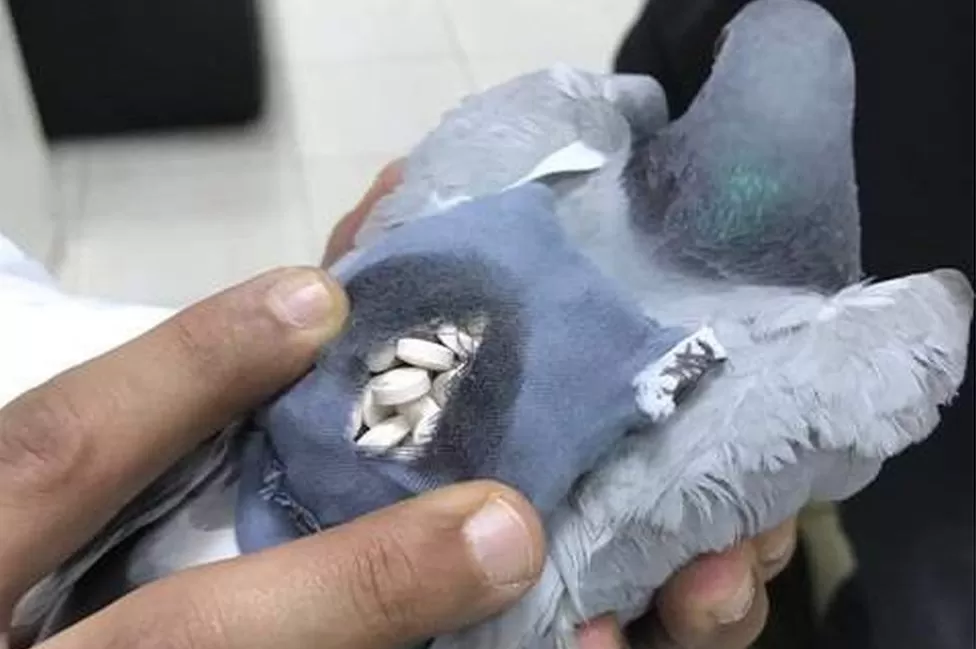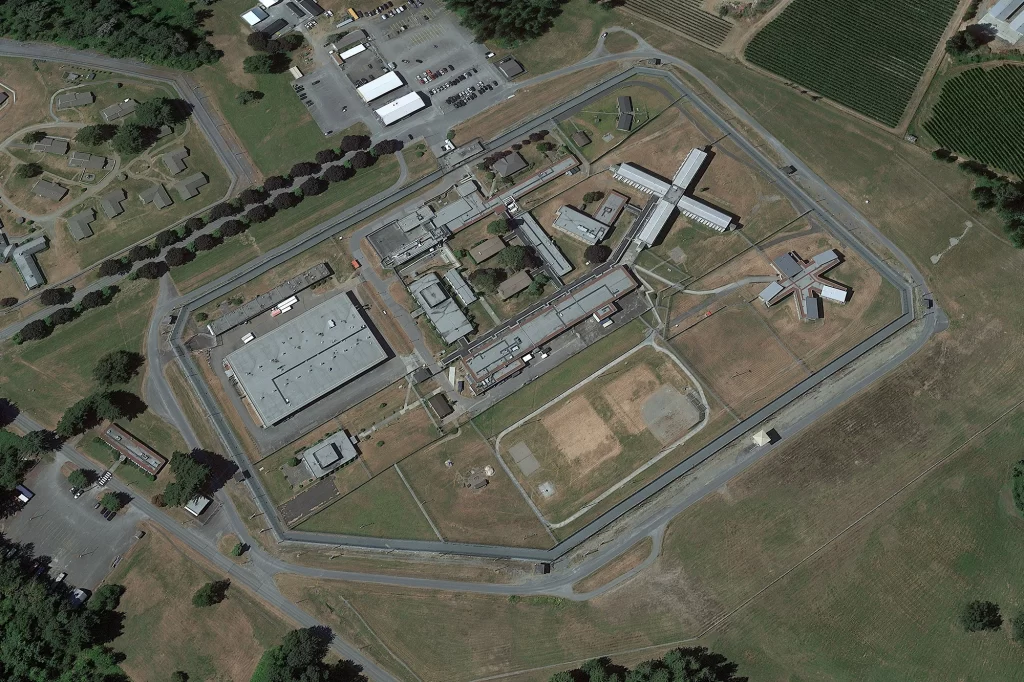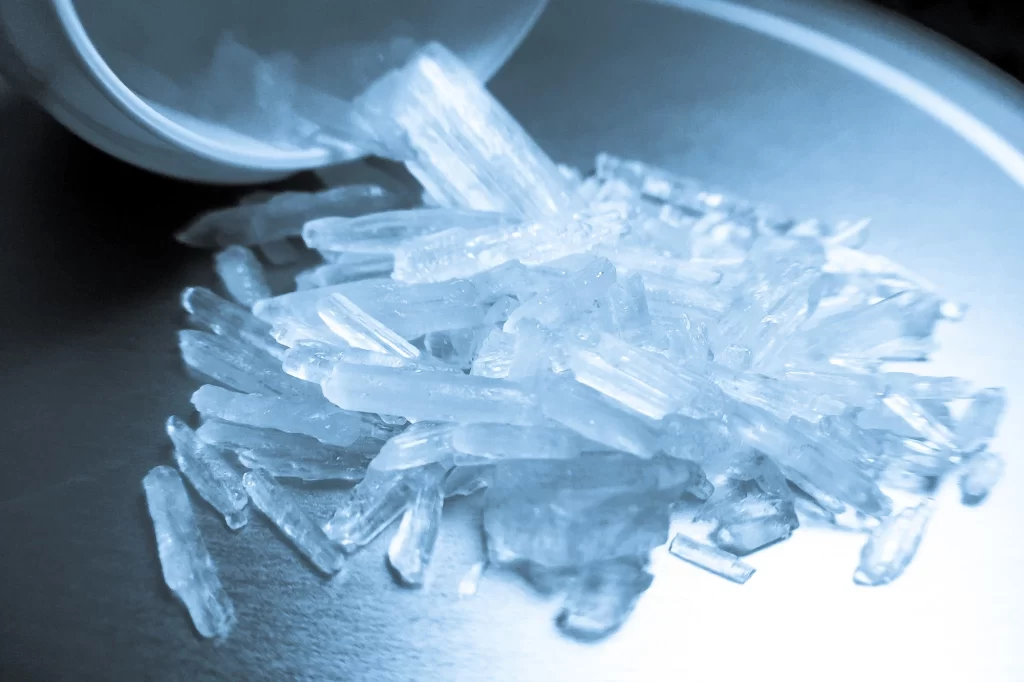Pigeon ‘Caught with Backpack of Meth’
Pigeon ‘Caught Smuggling Drugs’

Image caption,
The drugs are believed to be ketamine, an anaesthetic also used as an illegal party drug
A pigeon found in a Canadian prison yard with a tiny backpack filled with meth is carrying on a decades-long tradition of avian drug smuggling.
The pigeon was captured at the Pacific Institution in Abbotsford, British Columbia, in late December, according to the CBC.
John Randle, Pacific regional president of the Union for Canadian Correctional Officers, told the CBC the bird was in an inmate yard when officers on site noticed it had a tiny package on its back; that package contained 30 grams of meth.
“They had to corner it,” Randle said. “You can imagine how that would look, trying to catch a pigeon.” He said they captured the bird after “a lengthy period of time,” seized the drugs, and set it free.
Corrections Canada is investigating the incident, according to media reports.
While prison staff, visitors, mail, and drones are more commonly used to get contraband into jail, pigeons also have a long history of transporting drugs—and also wearing tiny backpacks, apparently.
A New York Times article from Feb 2, 1930, noted that pigeons with capsules of drugs like cocaine tied to their legs were plaguing the southern border. Being surrounded by pigeons is undesirable at the best of times, even more so when they’re participating in the drug trade.
The Times reported that smugglers were raising their own homing pigeons, a breed that can travel great distances and still return to their home lofts. Pigeons can fly up to 700 miles a day, according to the Pigeon Control Resource Center.
In 2017, a homing pigeon carrying 178 pills from Iraq to Kuwait in yes, another backpack, was trapped by Kuwaiti officials near customs, according to the publication Al Arabiya. Conflicting news reports from the time said the pills were either ketamine or ecstasy.
And lest we forget, “Narco Paloma,” a pigeon busted smuggling weed and cocaine into La Reforma, a maximum security prison in Costa Rica in 2015, and then turned into a meme. The bird was turned over to a rehab center afterward—the kind for animals.
Customs officials in Kuwait have apprehended a pigeon carrying drugs in a miniature backpack, Kuwaiti newspaper al-Rai reports.
A total of 178 pills were found in the fabric pocket attached to its back, the newspaper says.
The bird was caught near the customs building in Abdali, close to the border with Iraq.
An al-Rai journalist said the drugs were a form of ketamine, an anaesthetic also used as an illegal party drug.
Abdullah Fahmi told the BBC that customs officials already knew pigeons were being used to smuggle drugs, but this was the first time they had caught a bird in the act.
Law enforcement officials elsewhere have, however, identified previous cases where pigeons have been used to carry lightweight high-value narcotics.
In 2015, prison guards in Costa Rica caught a pigeon carrying cocaine and cannabis in a zipped pouch.
And in 2011, Colombian police discovered a pigeon that was unable to fly over a high prison wall because of the weight of a package of cocaine and marijuana strapped to it.
Pigeons have been used to carry messages since Roman times, using their powerful “homing” ability.
Racing pigeons can return to their lofts from distances of hundreds of kilometers.
Pigeon wearing backpack of crystal meth detained by Canadian prison
It was a bad coo-urier.
A pigeon was detained last month in a Canadian jail after it was discovered to be carrying a backpack that contained crystal meth, the Globe and Mail reported over the weekend.

Google Earth
The bird was found and later captured at the Pacific Institution correctional facility near Vancouver after officers noticed the high-flying fowl and its cargo.
“My initial reaction was shock because of all the advancements in technology and the number of drones we’ve seen,” said John Randle, Pacific regional president of the Union of Canadian Correctional Officers. “The fact that it’s tied to a pigeon is abnormal.”
According to Randle, the bird was apprehended on the penitentury wall after the staff set a trap for it.
“It was spotted by correctional officers, I believe, and security intelligence officers when the officers were doing their standard patrols around and throughout the unit and institution,” Randle told Global News on Friday. “That’s when they initially spotted the bird with the package on it.”

Getty Images/EyeEm
Randle — who has never seen winged traffickers in his 13 years as a corrections officer — stated that the smugglers would have had an easier time getting the drugs to land in specific location if they had used a drone instead of a live creature.
The official also noted that smugglers have recently had to go “old school” with their methods, as law enforcement has increased their awareness of drug-smuggling drones — something which, Randle said, the facility contends with daily.
“They have gone backward in technology,” he explained. “Maybe that’s because of all the work we have done with drone interdiction that they are trying to find new ways to get contraband in without being detected.”
Though the drug pigeon incident is currently under investigation, Randle said that the creativity of smugglers should be a “massive concern to everybody.”
“The introduction of drugs into federal prisons is becoming a huge crisis,” worried Randle. “The whole goal of prisons is to rehabilitate and release people into society as law-abiding citizens, [so] introducing drugs is scary and especially a drug like crystal meth.”
This is not only happening in Canadian Prisons but At Peruvian Prison, Costa Rica Prison, United Kingdom Prison and Even Kuwait
https://youtu.be/nC0sD8tZQNE



 Cops Gone Wild
Cops Gone Wild 

 Breaking News
Breaking News